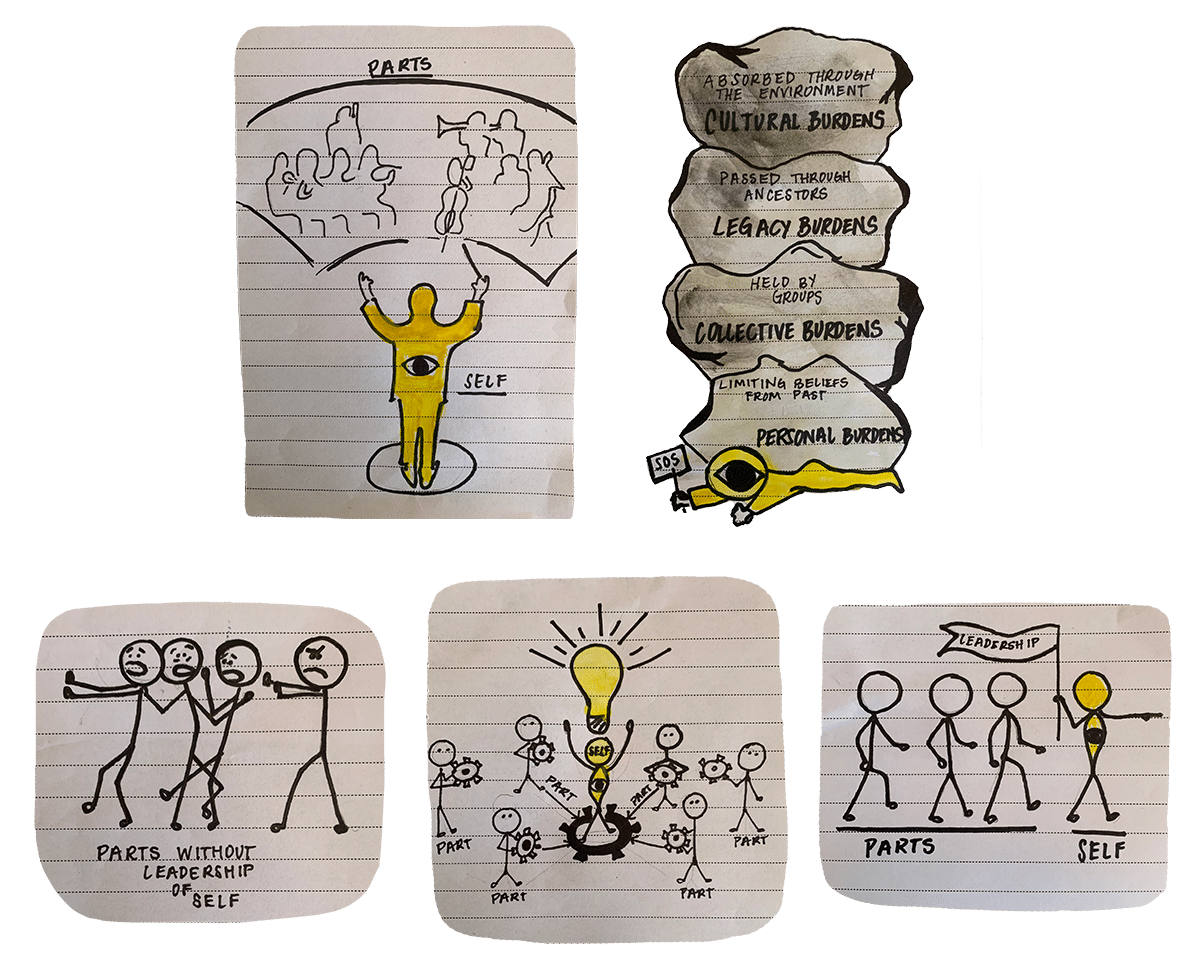
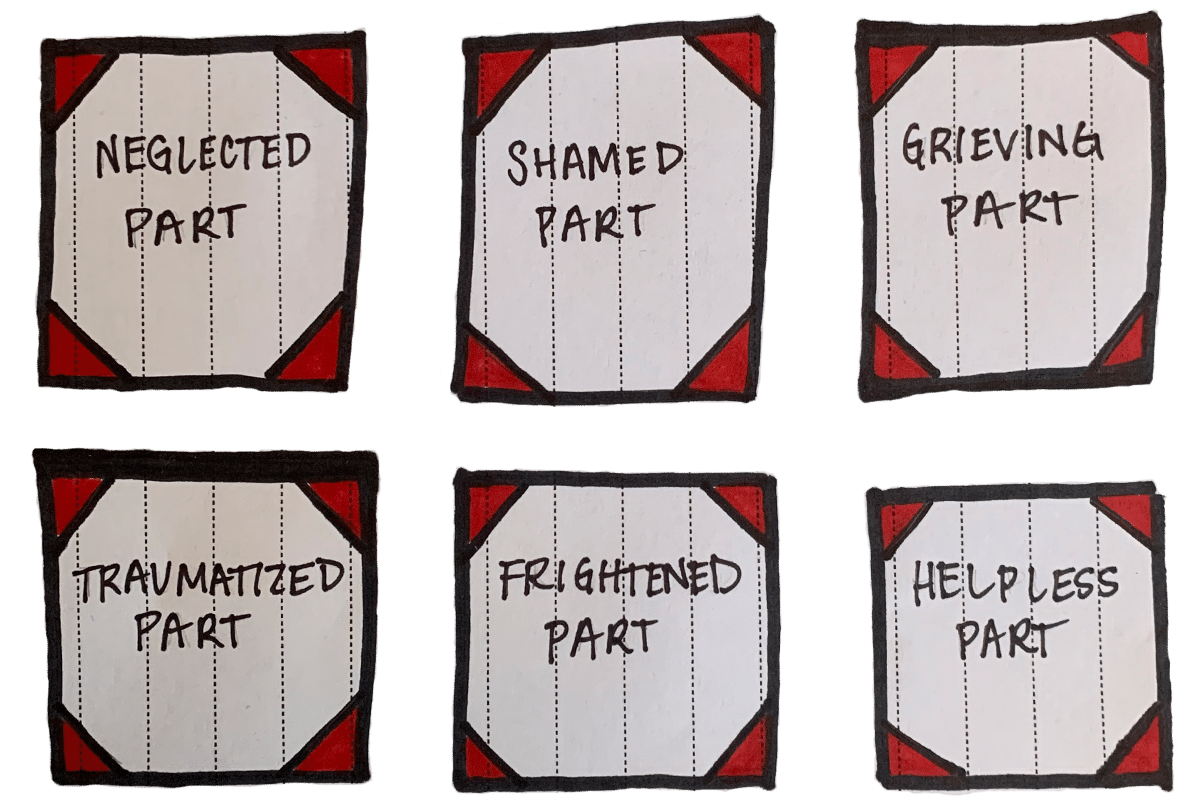

It's extreme
It's out of balance
It's killing the vibe
It's getting in the way
Yes, but...
Anything that isn't serving you has a positive intention to protect and manage your system against pain.
It's not you...It is only a part of you.
So... You're telling me that my (anxiety / depression / perfectionism, etc.) has a positive intention?
Yes. There are no bad parts, only parts that have developed strategies to survive, connect, and belong.
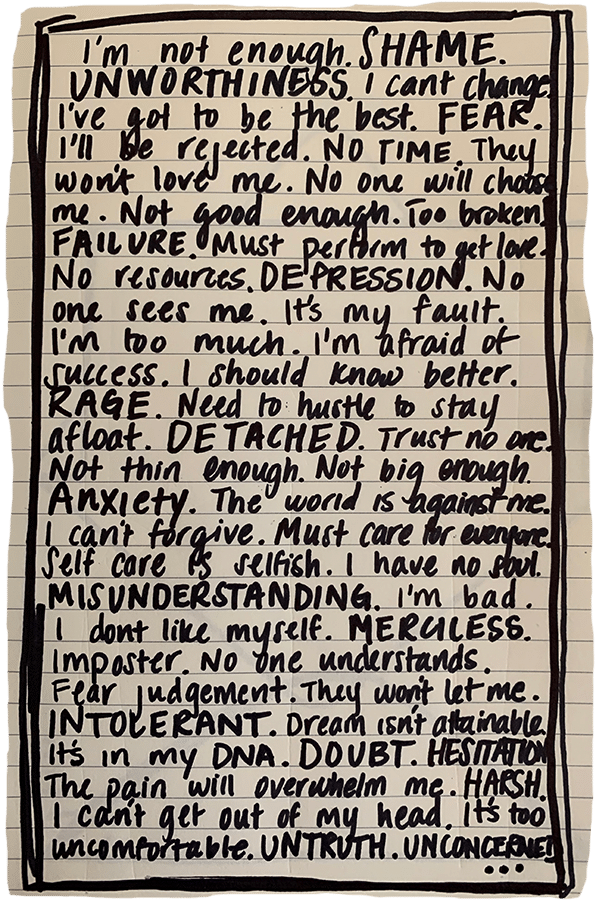
Hmm, okay, where do these parts come from? What happened?
Some parts may sound like this...
I’m not enough, I’m too much, I can’t do anything right! I feel unlovable, I have no control, I can’t get out of my head, I feel stuck...
Some parts may feel like this...
- Rejected
- Wounded
- Traumatized
- Not good enough
- Too much
- Bad
- Abandoned
- Dependent
- Shamed
Some parts behave like this...
- Self critical
- Controlling
- Judgemental
- Worried/Anxious
- Self-sabotaging
- Procrastinating
- Overachieving/Perfectionist
- Over-caretaking
- People pleasing
- Non-confrontational
Or like this!
- Reactive
- Numbing
- Angry/rageful
- Disordered eating part
- Compulsive shopping, scrolling, gaming
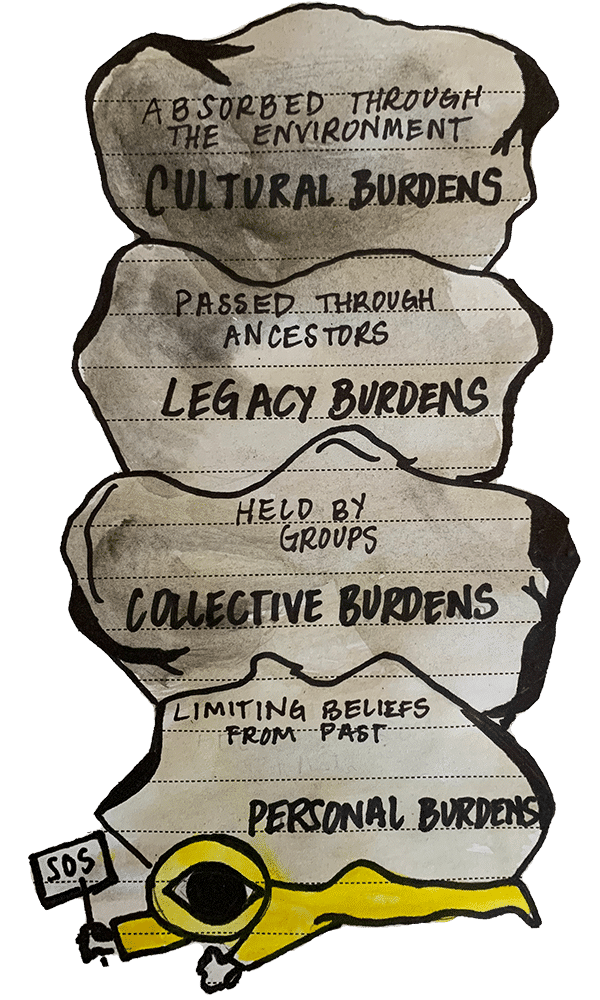
Cultural Burdens - Picked up from culture/environment
We are born into an atmosphere, simply taking in what’s around us. We all breathe air… unfortunately, some of that is radioactive garbage!
Legacy Burdens - Passed down generationally
Our parents, our parents’ parents, and their parents’ parents…
Collective Burdens - Held by groups
Organizations, groups and societies. In reality, collective responsibility could be both collective guilt as well as collectible honor…
Personal Burdens - Limiting beliefs from past injury
Survival strategies developed to cope with trauma, management of the wounds that have not been fully healed…
The Self
The Self is the agent of psychological healing
The Self is who we are when we’re not being hijacked by painful or defensive voices, it’s the place of centered consciousness where we can witness, observe, and respond.
Composed of the 8 C’s developed by Dr. Richard Schwartz: (connected, curious, compassionate, calm, courageous, clear, confident and creative).
The Self is the chosen lens, or state of awareness we use to look, inquire, and dialogue with parts in our system that are out of balance.
Likened to an orchestra conductor, the driver of the ship, the CEO… leading and directing our “parts.”
With each part having a role to play, the Self is there to ensure harmony among the different parts.
THROUGH THE SELF: Getting to know one’s parts by asking revealing questions, engaging in experiential dialoguing, and bringing wise and compassionate attention to our parts via the Self . . . is how parts are integrated and healed.

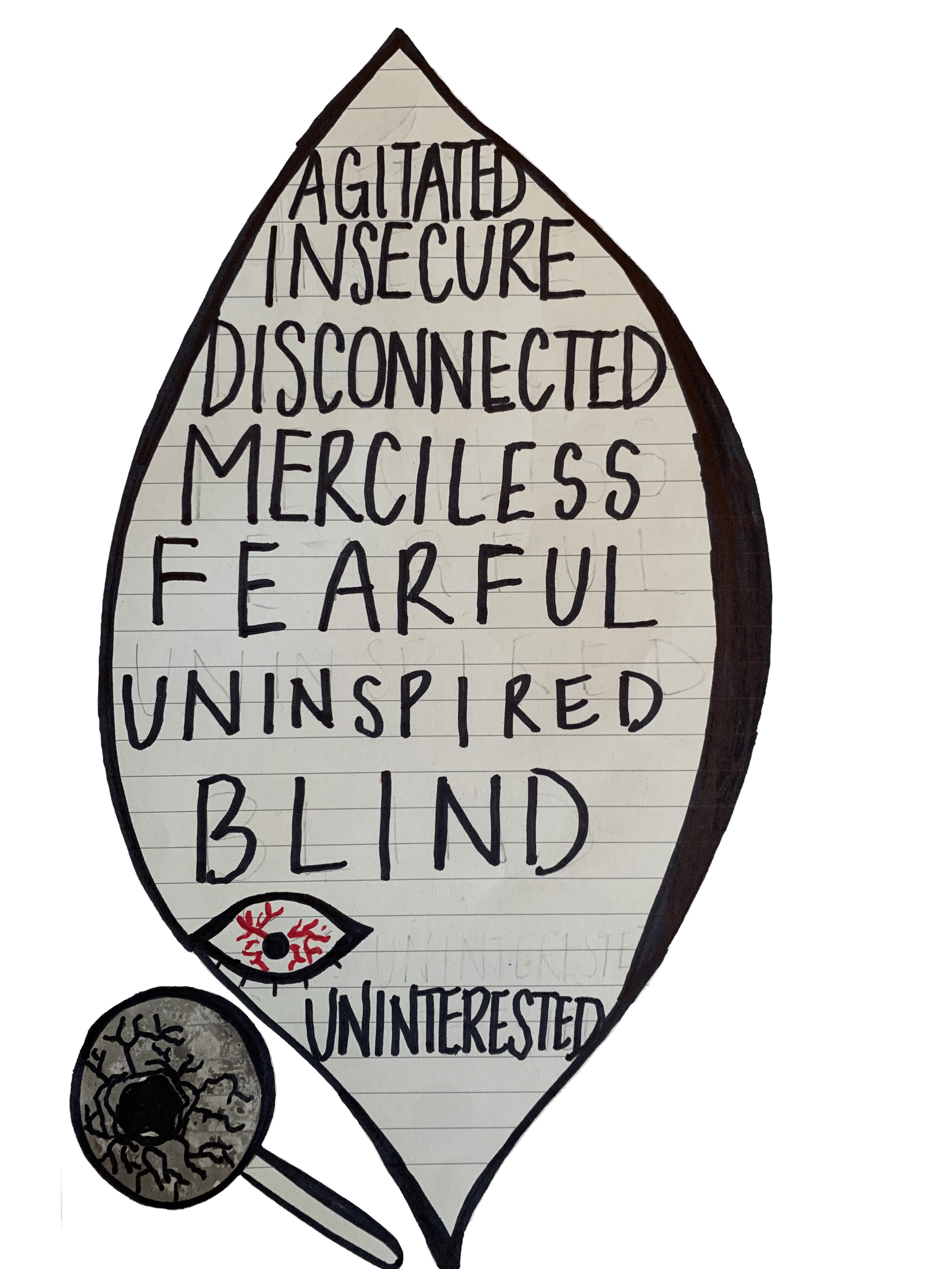
Psychological Rigidity
Our impulse to try to deny our pain, through suppression, self-medication, dwelling on it through rumination and worry, work without end, running and fighting all in an attempt to evade the pain we’re feeling.
Denying pain through suppression or self medicating
Disappearing or dwelling through rumination or worry- this could be about anything
Disappearing or dwelling through fantasy
Picking fights with people becomes a method to avoid the intimacy you crave
Buying into damaging stories about your pain and how to deal with it
Buying to damaging stories about our abilities, who you are, injustices of the world, how others behave
Treating life as a problem to be solved, rather than a process to be lived
Treating difficult thoughts, feelings, and memories as the problem, and elimination of them as the solution
What was occasional turns habitual, extra drink becomes substance abuse, procrastination becomes unpursued dreams
Mindless self-stimulation or work without end
Thinking positive thoughts explicitly to avoid or contradict negative thoughts
Constant whisperings of toxic solutions to psychological pain
Relating to shameful emotions and impulses with disgust – you’re ashamed of your own pain and suffering
Fighting impulses – human impulses, what is natural, pure, and good, fighting destructive impulses, what is destructive about the impulse? How destructive is it?
Criticizing emotions – I shouldn’t feel this way…
The Parts
Parts are habits or patterns of behavior that we have followed since childhood, some develop as we grow.
Parts can be identified through thoughts, feelings, emotions, attitudes, behaviors, body sensations, and desires.
Parts can be helpful or extreme/out of balance, but there are no “bad parts.” There are parts that are extreme or out of balance.
All parts have a positive intention. The positive intention of all parts is to protect and/or manage the system.
Parts guard against being hurt by others, and prevent painful experiences from flooding our consciousness.
If a part becomes extreme, it has done so protect and manage our deeper parts that are in pain or vulnerable.
Parts can be understood as people, with their own individual consciousness, purpose, and way of doing things. Parts in our system can have different ideas of what “happiness” means to our system.
